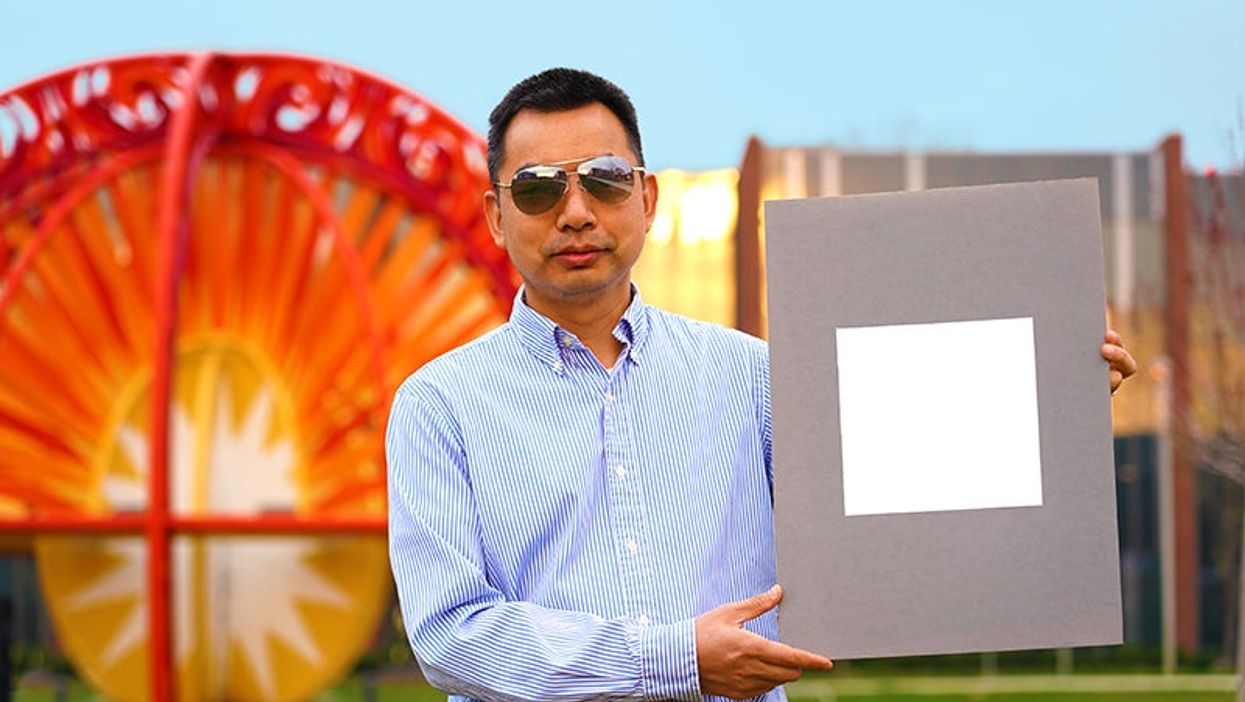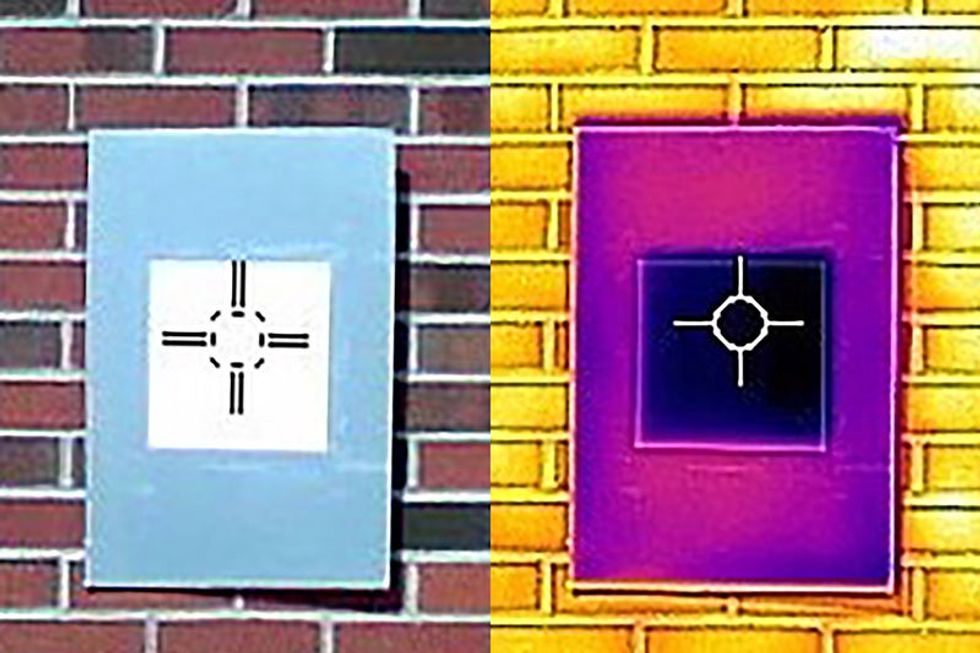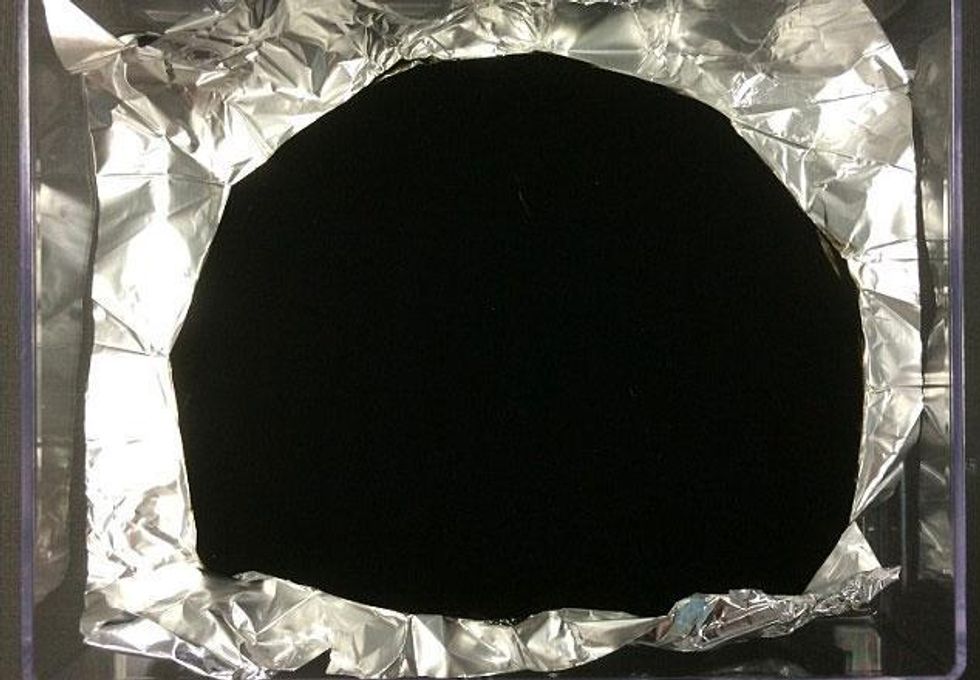Sinead Butler
Apr 16, 2021

Purdue University professor Xiulin Ruan holds up a sample of the whitest paint on record
Purdue University/Jared Pike
Scientists in the US have developed the world’s “whitest paint yet” which, they say, could help tackle global warming.
Tests on the "ultra-white" paint, carried out at Indiana’s Purdue University, found that it reflects more than 98 per cent of sunlight.
This compares with standard white paint which typically reflects between 80 and 90 per cent.
Coating buildings in hot climates with the special new gloss would help them stay cooler more efficiently and reduce the use of air conditioner.
In other words, it could soon become a useful weapon in the fight against climate change.
Read more:
- Neighbour’s note urging woman to dump ‘whiny’ boyfriend sparks domestic abuse debate
- ‘The Circle’ apartment is a catfish - here’s where it’s actually filmed
- 20 euphemisms people can use to insult your intelligence
- UK facing garden gnome shortage following the Suez Canal fiasco
- Grandmother brutally beaten on LA bus by woman who thought she was Asian
Lead researcher Prof Xiulin Ruan said of his teams creation: “If you were to use this paint to cover a roof area of about 1,000 square feet, we estimate that you could get a cooling power of 10 kilowatts.
“That’s more powerful than the central air conditioners used by most houses.”

Two features give the paint its extreme whiteness. One is the paint’s very high concentration of a chemical compound called barium sulfate, which is also used to whiten photo paper and cosmetics.
“We looked at various commercial products, basically anything that’s white,” said Xiangyu Li, a postdoctoral researcher at the Massachusetts Institute of Technology (MIT), who also worked on the project.
“We found that using barium sulfate, you can theoretically make things really, really reflective, which means that they’re really, really white.”
The second feature is that the barium sulfate particles within the paint are all different sizes. How much each particle scatters light depends on its size, so a wider range of particle sizes allows the paint to scatter more of the light spectrum from the sun.
“A high concentration of particles that are also different sizes gives the paint the broadest spectral scattering, which contributes to the highest reflectance,” said Joseph Peoples, a Purdue PhD student in mechanical engineering.
Of course, the ultra-white paint isn’t perfectly reflective – at 98.1 per cent – so there’s still a bit of room to make it whiter, but this will be a struggle without compromising its quality.
“Although a higher particle concentration is better for making something white, you can’t increase the concentration too much. The higher the concentration, the easier it is for the paint to break or peel off,” Li said.

Researchers believe that this ultra white paint may be parallel to some of the blackest blacks that have been created in the past.
Vantablack, a product developed by Surrey NanoSystems in 2014, which is coating of nanoscale carbon tubes, absorbs up to 99.965 per cent of visible light.
Then, in 2019, MIT engineers improved on this to create the “blackest black” f material to date where the foil captures at least 99.995 percent of any incoming light.
The foil was made from vertically aligned carbon nanotubes – microscopic filaments of carbon – grown on a surface of chlorine-etched aluminium foil.
To prove its blackness MIT even covered a £1.6 million diamond with the substance.
The material is 10 times blacker than anything that was reported before.
Top 100
The Conversation (0)













